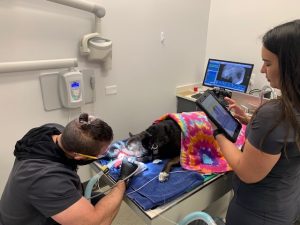
At West Coast Animal Hospital, we take great pride in offering your pets high quality dog dentistry and cat dentistry services. Common questions you may have about dental procedures:
Why does my dog have stinky breath?
Bad breath or halitosis can be a sign of dental disease. See your veterinarian if you notice bad breath from your pet. Healthy mouths do not have an odor. “Doggy breath” is so common that many people do not realize it is a sign of dental disease.
What can I do for at home care?
The best way to prevent tartar build-up is to brush teeth daily using pet friendly toothpaste. Special chew toys, treats and diets may also help reduce or delay plaque and tartar build-up. We recommend Hill’s T/D diet, Greenies chews, and Milk Bones but please consult your veterinarian with any questions.
The Veterinary Oral Health Council evaluates dental products for effectiveness. You can visit their website (www.vohc.org) for a list of plaque control products.
Do you preform anesthesia free cleanings?
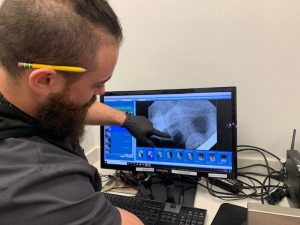
We do not preform anesthesia free cleanings. To read more about the safety differences between our dental procedures and a anesthesia free cleaning, please visit https://afd.avdc.org/category/facts/
How is my pet monitored under anesthesia?
Every pet is monitored by one of our trained staff members during the procedure. We monitor blood pressure, heart rate, respiratory rate, CO2 levels, SPO2 oxygen saturation, and temperature to ensure your pet is as stable as possible while under anesthesia.
How often do you perform this procedure?
We offer dental procedures 7 days a week!
What equipment do you have to perform this procedure?
WCAH is proud to use state of the art digital radiographs to access your pet’s dental health and ultrasonic scalers to thoroughly clean and polish the teeth. We are happy to go over the radiographs with you at time of discharge.
Does my pet need full mouth radiographs?
Just like a visit to your dentist, xrays help the doctor diagnosis the problem that may be hidden below the gum-line. Teeth that are non-vital (dead) often need xrays to see the problem. Xrays help the doctor evaluate extraction sites and bone quality in cases of fractured teeth, discolored teeth, missing teeth, teeth with periodontal pockets, loose or mobile teeth, areas of swelling, every post-extraction site, and resorptive lesions to name a few.
Do you use sterile equipment on each patient?
Our dental equipment is cleaned and sterilized in an autoclave prior to each dental procedure to ensure no bacteria or viruses are spread to your pet.
Why are dental radiographs recommended?
Just like a visit to your dentist, xrays help the doctor diagnosis the problem that may be hidden below the gum-line. Teeth that are non-vital (dead) often need xrays to see the problem. Xrays also show infected teeth and how much bone loss is present. Xrays help the doctor evaluate extraction sites and bone quality.
What is a Resorptive Lesion?
Tooth resorption more commonly affects cats but can occur in dogs as well. Resorptive lesions can be very painful. The exact cause is unknown. Many studies have been performed, but the findings reveal that tooth resorption cannot be conclusively linked to diet, vaccines, or other diseases. Whatever the underlying cause, the end result is erosion of cementum and dentin that often progresses into the pulp of the affected tooth.
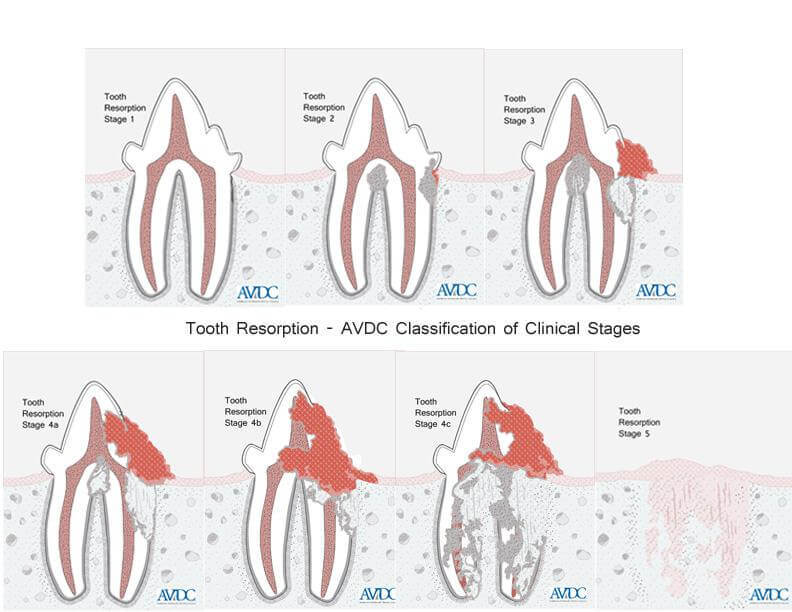

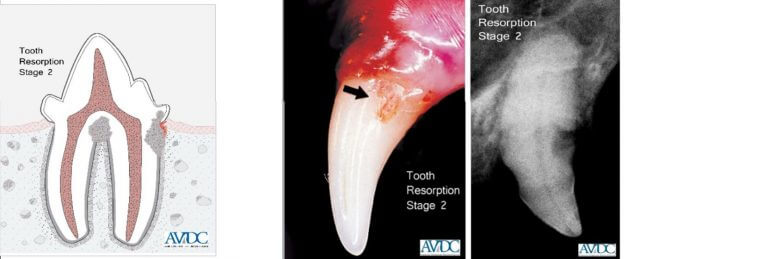
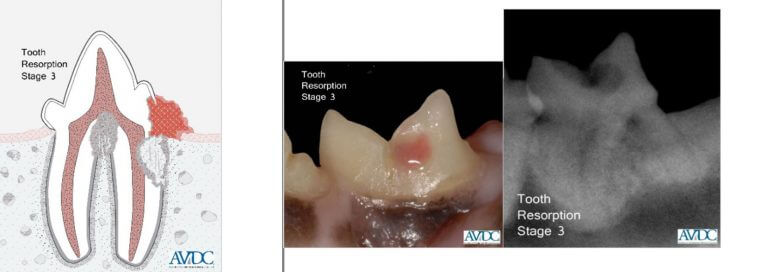

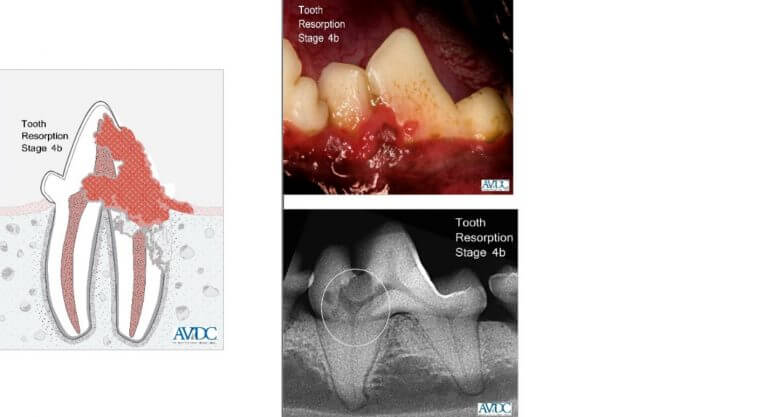
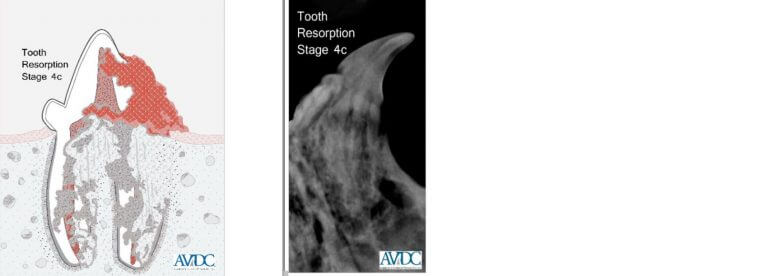
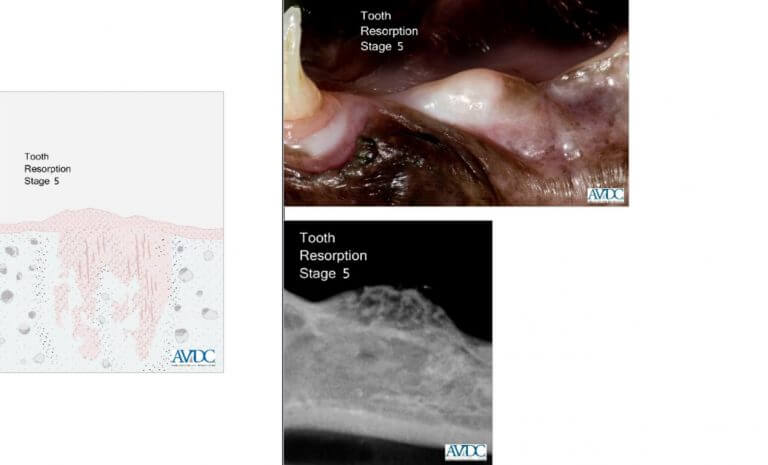
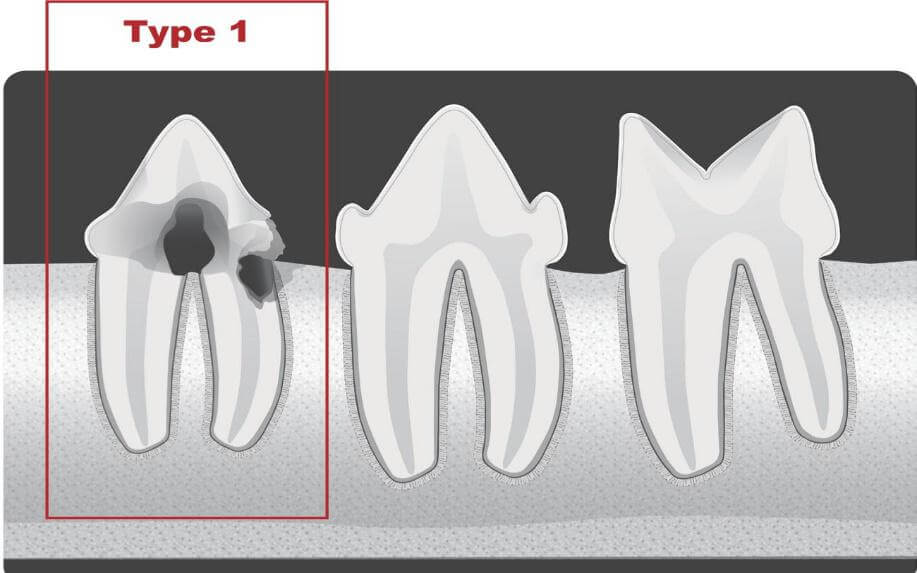
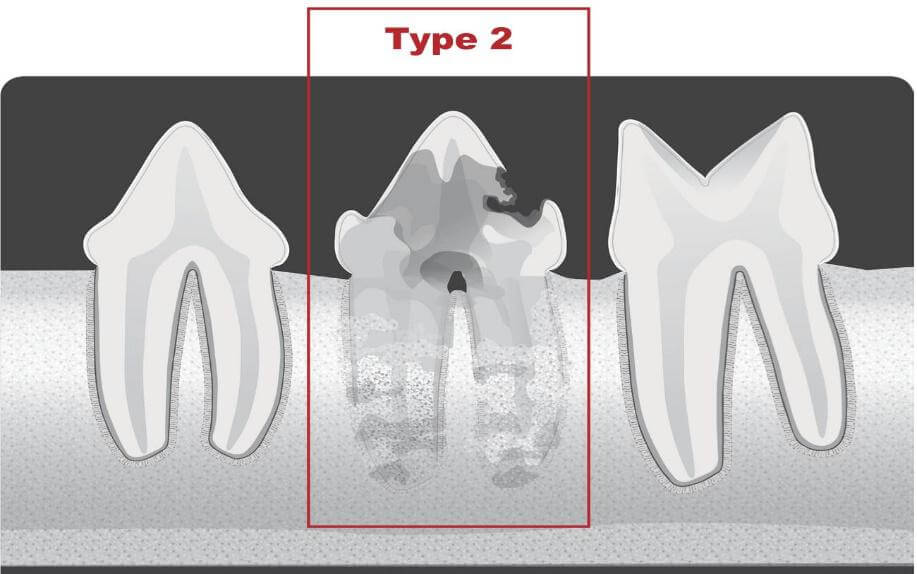
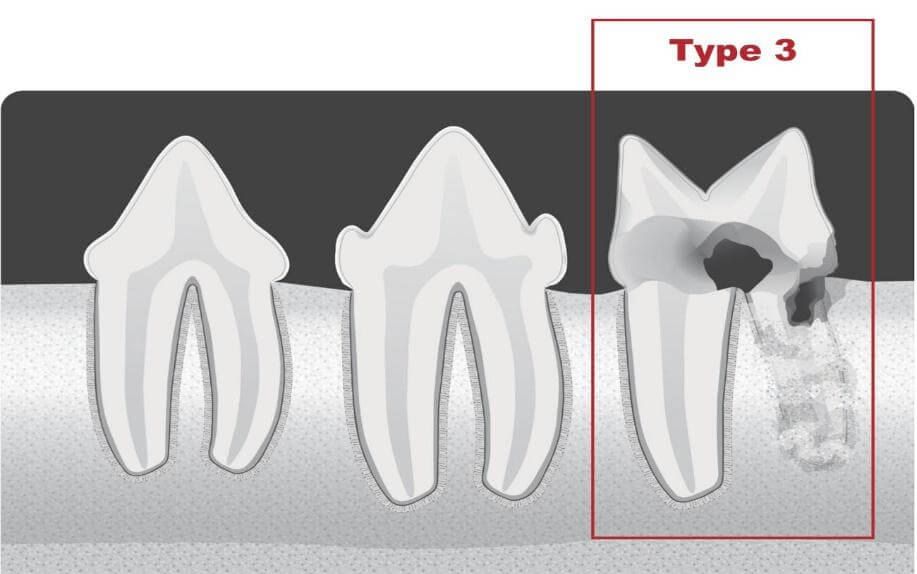
Radiographic Examples of Types of Tooth Resorption:

Click Here to watch the Furry Friend Friday Blog
Copyright of these images is owned by AVDC. Download of these images and use in printed materials or presentations is permitted without charge provided that the source is cited as © AVDC ®, used with permission. The diagrams are provided courtesy of Veterinary Information Network. The clinical images are provided by diplomates of AVDC.
